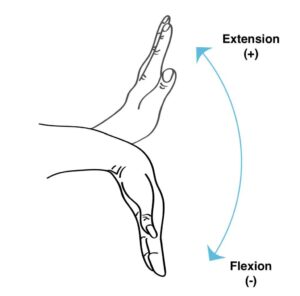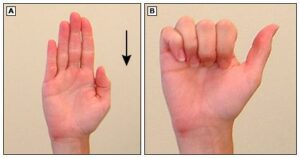Do you suffer from cubital tunnel syndrome? If so, you know how painful and frustrating it can be. This condition is caused by pressure on the ulnar nerve, which runs from your neck to your hand. Symptoms include pain, tingling, and numbness in the arm and hand. Fortunately, there are a number of exercises that can help relieve the symptoms of cubital tunnel syndrome. In this blog post, we will discuss some of the best exercises for this condition.
Contents
What Is Cubital Tunnel Syndrome?

The ulnar nerve is the nerve that runs from your shoulder to your hand. It passes through a narrow space in the elbow called the cubital tunnel. Cubital tunnel syndrome occurs when the ulnar nerve becomes compressed or irritated as it passes through this space. This can cause pain, tingling, and numbness in your arm and hand.
It is also called ulnar nerve entrapment. It’s a type of peripheral nerve entrapment syndrome. Peripheral nerves are the nerves that carry signals from your brain and spinal cord to the rest of your body. It is similar to carpal tunnel syndrome, which affects the median nerve in your wrist.
What Kind Of Exercises Are Used In Cubital Tunnel Syndrome?
There are various types of exercises which is helpful for Cubital Tunnel Syndrome. They are as follows:
1. Wrist extension

This exercise helps to stretch the muscles and tendons in your forearm that may be causing or worsening symptoms of Cubital Tunnel Syndrome.
To do this exercise
- Sit or stand upright with your arm outstretched in front of you and your palm facing down.
- Using your other hand, slowly bend your wrist back until you feel a stretch in your forearm muscles.
- Hold for 30 seconds and repeat 3 times.
2. Wrist flexion

This exercise also helps to stretch the muscles and tendons in your forearm that may be causing or worsening symptoms of Cubital Tunnel Syndrome.
To do this exercise
- Sit or stand upright with your arm outstretched in front of you and your palm facing up.
- Using your other hand, slowly bend your wrist forward until you feel a stretch in your forearm muscles.
- Hold for 30 seconds and repeat 3 times.
3. Elbow flexion
This exercise helps to stretch the muscles and tendons around your elbow that may be causing or worsening symptoms of Cubital Tunnel Syndrome.
To do this exercise
- Sit or stand upright with your arm outstretched in front of you and your palm facing up.
- Using your other hand, slowly bend your elbow until you feel a stretch in the muscles and tendons around your elbow.
- Hold for 30 seconds and repeat 3 times.
4. Elbow extension
This exercise also helps to stretch the muscles and tendons around your elbow that may be causing or worsening symptoms of Cubital Tunnel Syndrome.
To do this exercise
- Sit or stand upright with your arm outstretched in front of you and your palm facing down.
- Using your other hand, slowly straighten your elbow until you feel a stretch in the muscles and tendons around your elbow.
- Hold for 30 seconds and repeat 3 times.
5. Ulnar nerve glide
This exercise helps to move the ulnar nerve in your arm, which may be causing or worsening symptoms of Cubital Tunnel Syndrome.
To do this exercise:
- Sit or stand upright with your arm outstretched in front of you and your palm facing up.
- Keeping your elbow straight, slowly bend your wrist until your hand is pointing down towards the floor.
- Hold for 30 seconds and repeat 3 times.
6. Pronation stretch
This exercise helps to stretch the muscles and tendons in your forearm that may be causing or worsening symptoms of Cubital Tunnel Syndrome.
To do this exercise
- Sit or stand upright with your arm outstretched in front of you and your palm facing up.
- Keeping your elbow straight, slowly rotate your hand until your palm is facing down.
- Hold for 30 seconds and repeat 3 times.
7. Supination stretch

This exercise also helps to stretch the muscles and tendons in your forearm that may be causing or worsening symptoms of Cubital Tunnel Syndrome.
To do this exercise
- Sit or stand upright with your arm outstretched in front of you and your palm facing down.
- Keeping your elbow straight, slowly rotate your hand until your palm is facing up.
- Hold for 30 seconds and repeat 3 times.
8. Finger extension
This exercise helps to stretch the muscles and tendons in your fingers that may be causing or worsening symptoms of Cubital Tunnel Syndrome.
- Sit or stand upright with your arm outstretched in front of you and your palm facing up.
- Using your other hand, slowly bend each finger back until you feel a stretch in the muscles and tendons around your finger.
- Hold for 30 seconds and repeat 3 times.
9. Finger flexion

This exercise also helps to stretch the muscles and tendons in your fingers that may be causing or worsening symptoms of Cubital Tunnel Syndrome.
To do this exercise
- Sit or stand upright with your arm outstretched in front of you and your palm facing down.
- Using your other hand, slowly bend each finger forward until you feel a stretch in the muscles and tendons around your finger.
- Hold for 30 seconds and repeat 3 times.
10. Thumb extension
This exercise helps to stretch the muscles and tendons around your thumb that may be causing or worsening symptoms of Cubital Tunnel Syndrome.
To do this exercise
- Sit or stand upright with your arm outstretched in front of you and your palm facing up.
- Using your other hand, slowly bend your thumb back until you feel a stretch in the muscles and tendons around your thumb.
- Hold for 30 seconds and repeat 3 times.
11. Thumb flexion

This exercise also helps to stretch the muscles and tendons around your thumb that may be causing or worsening symptoms of Cubital Tunnel Syndrome.
To do this exercise
- Sit or stand upright with your arm outstretched in front of you and your palm facing down.
- Using your other hand, slowly bend your thumb forward until you feel a stretch in the muscles and tendons around your thumb.
- Hold for 30 seconds and repeat 3 times.
There are many other exercises that can help relieve the pain of Cubital Tunnel Syndrome. If you have any questions, be sure to ask your doctor or physical therapist.
What Are The Benefits?
The benefits of exercise are as follows:
1. Improve the range of motion in your elbow
One of the primary goals of any physical therapy program is to improve the range of motion in the joints. This is especially important for those suffering from cubital tunnel syndrome, as the condition can lead to stiffness and loss of motion in the elbow joint.
2. Reduce the pressure on the ulnar nerve
The ulnar nerve is the nerve that runs from the shoulder all the way down to the hand. It passes through a small space in the elbow known as the cubital tunnel. When this space becomes narrowed, it puts pressure on the nerve and leads to pain, numbness, and tingling in the arm and hand. Exercises that stretch and strengthen the muscles around the elbow can help to reduce the pressure on the nerve and relieve these symptoms.
3. Strengthen the muscles around the elbow joint
The muscles around the elbow joint help to support and stabilize the joint. When these muscles are weak, it can lead to instability in the joint and further irritation of the ulnar nerve. Exercises that strengthen these muscles can help to prevent further injury and pain.
4. Prevent further damage to the ulnar nerve
If left untreated, cubital tunnel syndrome can cause permanent damage to the ulnar nerve. This can lead to loss of feeling in the arm and hand and even paralysis. Exercises that help to relieve the pressure on the nerve can help to prevent this from happening.
5. Improve overall hand function
Cubital tunnel syndrome can cause a loss of grip strength and dexterity in the hand. This can make it difficult to perform everyday tasks such as opening doors, typing on a keyboard, or even holding a cup of coffee. Exercises that improve the range of motion and strength in the hand can help to improve overall function.
While there are many exercises that can help to relieve the symptoms of cubital tunnel syndrome, it is important to consult with a doctor or physical therapist before starting any new exercise program. They can help to tailor a program specifically for your needs and make sure that you are doing the exercises correctly.
Conclusion
It may be concluded that exercises for cubital tunnel syndrome may help to alleviate symptoms and improve function. The type of exercises, number of repetitions, and duration of the exercise program may be important factors to consider. Speak with your doctor or physical therapist to determine which exercises are best for you.
Physical Therapy help patients recover from pain. If you’re experiencing Back pain, Shoulder pain, Knee pain, Neck pain, Elbow pain, Hip pain, or Arthritis pain, a physical therapist at MantraCare can help: Book a physiotherapy session.


